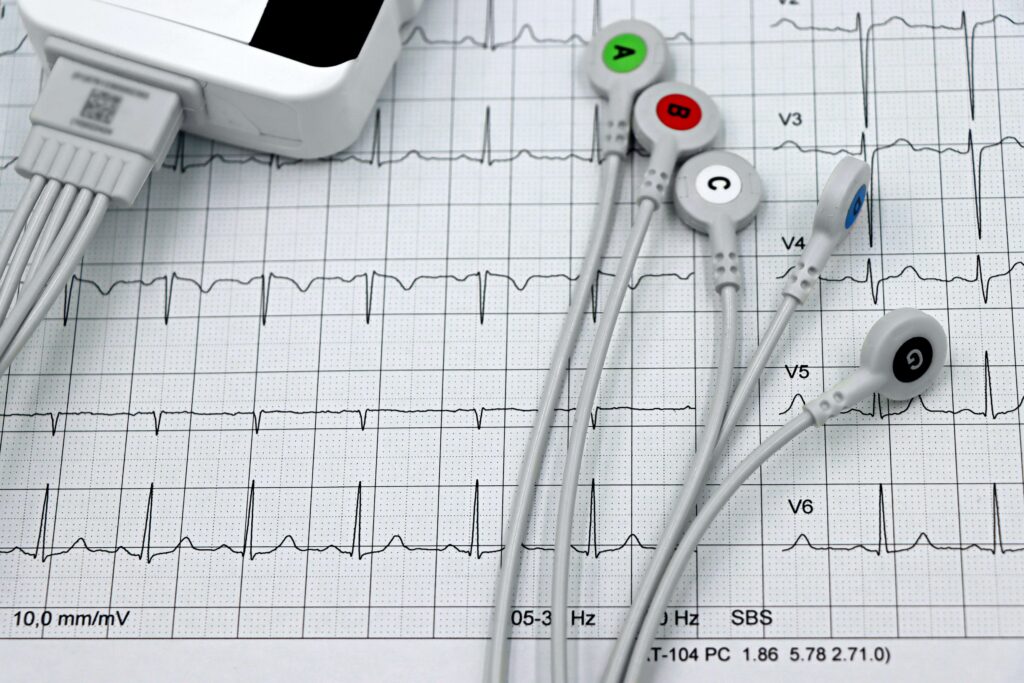A few years ago, my grandad died. He’d moved to Cornwall with his partner for his last years, Pauline; the place that made her feel at home. Pauline was a fascinating woman – incredibly smart and well-read, so the conversation could wander a million miles from where it started, always taking interesting twists and turns. She was also a woman with severe anxiety and depression, which at the time of her death – almost a year to the day after my grandad passed – she was about to undergo electro-convulsive therapy to help treat.
When Pauline died, she was experiencing symptoms of a heart attack. Her friend, a nurse, correctly identified the symptoms and raised the alarm to get her the medical support she needed. Unfortunately, the medical professionals didn’t agree she was having a heart attack, and dismissed her symptoms as anxiety. Pauline died. I don’t know the medical ins and outs of her case, but I do know that her experience is not uncommon.
A study out of the University of Leeds published in 2016 looked at 564,412 patients with acute myocardial infarction. The research showed that women who had a final diagnosis of one type of myocardial infarction had a 59% greater chance of a misdiagnosis, compared with men. And women who had a final diagnosis of the other type had a 41% greater chance of a misdiagnosis when compared with men.
And when it comes to myocardial infarction, early diagnosis is crucial. The same study found that, in total, 168,534 (29.9%) patients had an initial diagnosis which was not the same as their final diagnosis – so, almost 30% of patients were misdiagnosed. They looked at two types of myocardial infarction, and found that for those who were originally misdiagnosed but turned out to have one type of heart attack, the one year mortality rate was more than double that of those who were diagnosed correctly in the first place (25.5% compared to 10.7%).
According to Professor Gale, one of the study authors, “This nationwide research shows that women are at a higher risk of being misdiagnosed following a heart attack than men. When people with heart attack receive the wrong initial diagnosis, there are potentially important clinical repercussions, including an increased risk of death.”
Other studies have also shown a disparity in diagnosis and treatment between men and women when it comes to heart attack symptoms. In 2022 a paper published in the Journal of the American Heart Association looked at 101,372 emergency department visits over the course of four years, and concluded that “Women and people of colour with [chest pain] waited longer to be seen by physicians, independent of clinical features. Women were independently less likely to be admitted when presenting with [chest pain].”
So, what’s going on? Why don’t women get diagnosed properly when it comes to heart attack symptoms? A common explanation that is often shared around feminist spaces is that heart attack symptoms present differently in women and men. In fact, the reason I finally got around to writing about this issue was after I heard a feminist podcast that usually does pretty well at being skeptical spread the misconception that “women just have different heart attack symptoms”. Essentially, that when women have heart attacks, their symptoms are atypical compared to the symptoms that men have – and because we do all our medical research in (white) men, and we do all our medical education on the experience of (white) men, women suffer misdiagnosis.
While it is true that medical research is biased towards men, and we sometimes make assumptions based on the experience of entire populations based on the experiences of just a privileged few, it is simply not the case that men and women have vastly different symptoms when it comes to heart attacks.
Firstly, we need to understand what a heart attack is. A heart attack, medically known as a myocardial infarction (MI), is a very specific thing. Well actually two specific things, as I’ve already alluded to. There’s a STEMI, or ST-elevation myocardial infarction, and an NSTEMI, or non-ST-elevation myocardial infarction. According to the Fourth Universal Definition of Myocardial Infarction from 2018,
The clinical definition of MI denotes the presence of acute myocardial injury detected by abnormal cardiac biomarkers in the setting of evidence of acute myocardial ischemia.
Essentially, the blood flow to the heart has been blocked, and therefore the heart tissue has become damaged, leading to particular markers to be elevated in the blood. The causes can vary, but it’s not unusual for the cause to be artherosclerosis of a blood vessel which may involve a plaque rupture that causes a blood clot to form and block an artery.
The symptoms of a heart attack include pain or discomfort in the chest which arrives suddenly and lasts for more than 15 minutes. It might feel like pressure, tightness or squeezing pain, or might radiate down your arms (particularly the left arm but it can be both), or travels into your neck, jaw, back or stomach. But it can also include feeling sick, sweaty, light-headed or short of breath.

If you present with symptoms of a heart attack the first thing you need is an urgent ECG which can detect changes in how your heart is beating, and you might also have bloods taken to detect if you have elevated biomarkers – particularly cardiac troponin.
A study published in 2019 looking at patient reported symptoms in 1,941 patients showed that women were actually more likely to have typical heart attack symptoms than men – 77% compared to 59%. Typical heart attack symptoms also have a greater predictive value for myocardial infarction in women than in men – when women present with three or more typical clinical features of myocardial infarction, the likelihood that they’re having a heart attack is higher when compared to men.
This is not the only study to disagree with the assumption that women have atypical symptom presentation. Other studies suggest women might be more likely to present with heart attack symptoms that don’t include chest pain, but that doesn’t mean that they’re not experiencing classical heart attack symptoms, and it might mean that their descriptions of pain differ rather than the specific physiological experience. But in the 2019 study, 93% of women presented with chest pain, they were also more likely to report a wide range of the other symptoms associated with a heart attack – leaving the authors to argue:
The presence of these additional symptoms in women may cloud their symptom presentation, influence clinician interpretation of symptoms, and provide the basis for the atypical symptom message to gain dominance.
As we know from many other studies, women in pain are less likely to believed about their pain. If a women tells a medical professional: “I’ve got pain in my chest, and nausea and palpitations and pain in by jaw”, the doctor might assume that nausea, palpitations and jaw pain could be a sign of anxiety – completely glossing over the more important report of chest pain. And when a patient is later diagnosed with a myocardial infarction, her medical notes might not make any mention of the initial chest pain she reported to her doctor.
According to a report from the British Heart Foundation on gender bias in heart attack care:
A woman in the UK is 50 per cent more likely than a man to receive an initial wrong diagnosis following a heart attack, according to a study carried out between 2002 and 2013.
But there’s more to it than just medical bias. Women who turn up at the emergency department with symptoms of myocardial infarction experience a delay in being triaged and seeing a medical professional, a delay in medical testing and a delay in diagnosis, and studies also see a delay in women presenting at the emergency department in the first place.
One of the issues that the British Heart Foundation raises is awareness, for both for patients and their doctors. In the UK, women have roughly half the number of heart attacks as men, but globally coronary heart disease – the main cause of heart attacks – is still the biggest killer in women, and in the UK kills more than twice as many women as breast cancer.
This does bring us back to the issue that our knowledge and education is based on the experiences of men. Heart disease and heart attacks are often considered to be a man’s disease, which means women might be less likely to consider if their symptoms are related to a myocardial infarction and therefore less likely to make their way to the emergency room. Once they see a medical professional, a lack of awareness of the risk factors for women experiencing myocardial infarction can mean the diagnosis isn’t on the doctor’s radar as an option for that patient and delay diagnosis.
In fact, some risk factors might have a greater impact in women than men – one study showed that smoking, diabetes, and high blood pressure have a greater chance of leading to a heart attack in women. Another reported gender difference is that while women do have similar increases in circulating cardiac troponin when experiencing myocardial infarction, they start with a lower baseline so that increase can be easier to miss when the thresholds are set against a baseline measured in men. More sensitive forms of troponin testing can help with this.
So there are gender differences when it comes to identifying, diagnosing and treating heart attacks. But it’s not as simple as women being “different” – there are a range of different steps in the pathway that are vulnerable to medical bias as well as issues with awareness and some biological differences. We need to do more research in women – according to the BHF historically two thirds of all clinical research has been carried out in men and women have been under-represented in cardiovascular clinical trials. But in the meantime, a realistic awareness of the issue is important in tackling the bias women experience.





